Have you ever found your crunchy veggies turned icy in the fridge drawer?
Well, let’s become refrigerator detectives together! We’ll crack the case of freezing vegetables and learn all about the right fridge settings.
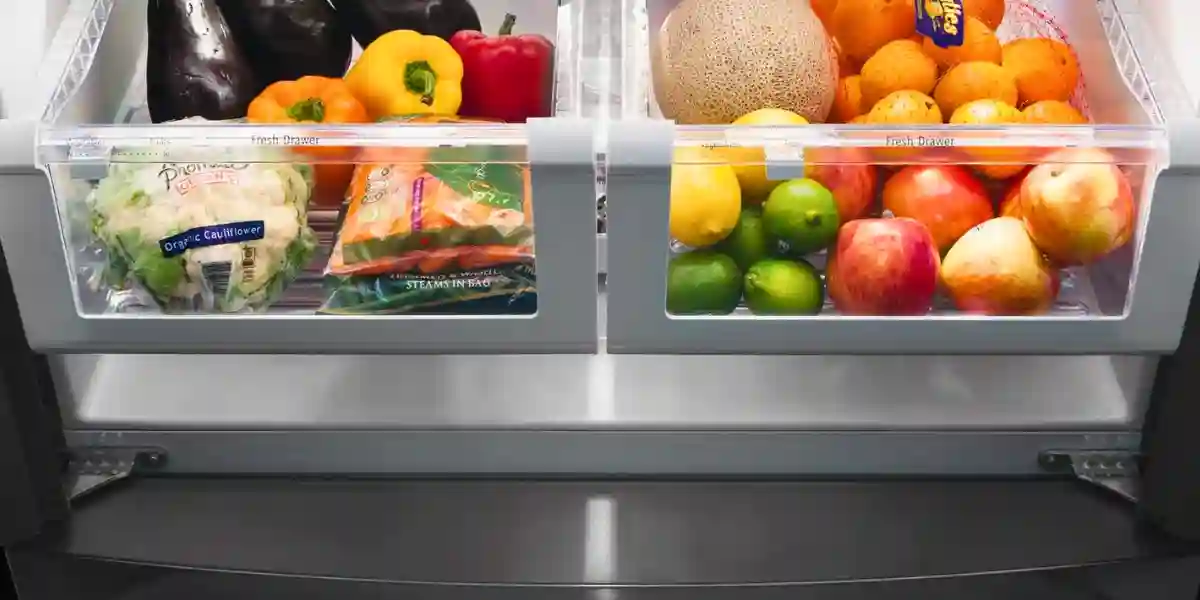
Vegetables Freezing In Refrigerator Drawer
If your veggies freeze in the refrigerator drawer, simply reduce the temperature and tweak the moisture settings.
More condensation means more freezing, so open the drawer vents to let it out. Overcrowding food limits airflow and causes freezing, so remember, less is more!
7 Causes And Solutions Of Vegetable Freezing In Refrigerator Drawers
1. Look Over the Fridge’s Temperature Settings
Your refrigerator’s temperature settings might be too cold. This issue is often the cause of your fridge’s bottom drawer freezing vegetables.
In most cases, the fridge’s lowest portions turn cold faster because cool air settles at the base.
Check the refrigerator’s user manual to find the best temperature setting for your specific model.
For refrigerators with digital control panels, a 37℉ temperature is often recommended.
If your model features a temperature control dial or a panel with lit temperature lights, set it to “3”.
2. Watch for Overfilling the Refrigerator
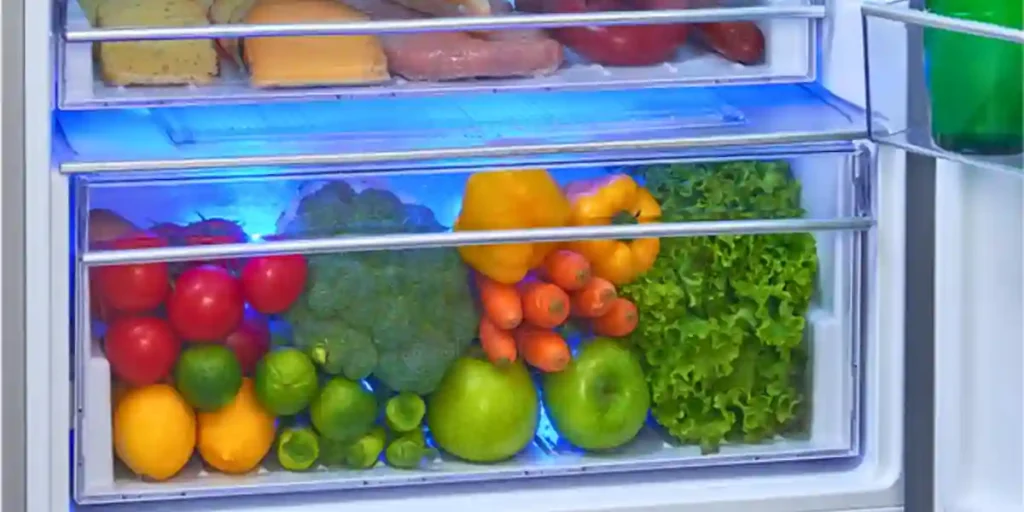
A refrigerator crammed with too much food often leads to the bottom drawers freezing the produce.
Stuffing the fridge to capacity obstructs the airflow, causing air to pool in the crisper drawers and freeze the fruits and vegetables inside.
Here are some organizational tips to keep in mind:
- Leave room between items for better airflow.
- Fill the fridge about ¾ full to avoid overcrowding while still maintaining efficient cooling.
- Keep the crisper drawers half full to prevent cold air from accumulating and freezing the contents.
3. Maintain Clear Cooling Vents
If the cooling vents in your refrigerator are blocked or not working correctly, the cooling air will not circulate well.
This situation might lead to your fridge failing to cool properly and the drawers freezing food.
To ensure your refrigerator’s vents work as they should:
- Do not block vents when stocking your fridge.
- Leave a 1-2 inch gap around the fridge’s walls to keep vents clear.
- Check the vent dampers, as they control cool airflow. If a damper gets stuck open, it can make the fridge too cold, causing food to freeze. If this happens, replace the damper.
4. Alter Your Crisper Drawer Settings
Check the settings of your crisper drawers if you find them freezing food. These drawers typically have a slider that adjusts the vent in the drawer, changing the humidity to keep produce fresh.
If you spot frost or condensation in the drawer, slide it to the left to open the vent, reducing the humidity and minimizing frost.
5. Maintain Adequate Food Amount in the Fridge
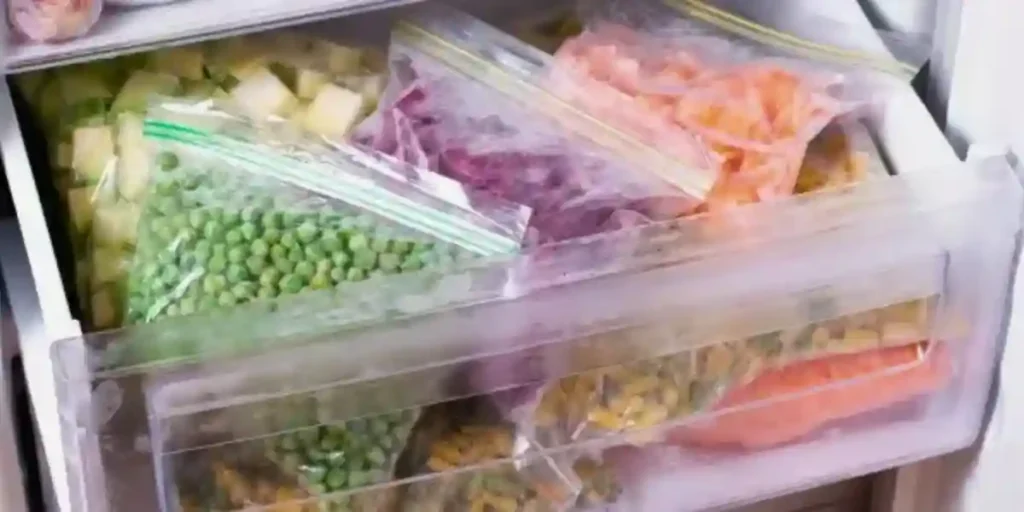
Having the right amount of food in your fridge can help prevent freezing in the crisper drawers.
If there’s too much food in the fridge or the crisper drawer, cold air can get trapped and freeze the contents.
On the other hand, if your fridge is nearly empty, the cold air can sink to the bottom and freeze the food in the crisper drawer.
A good rule of thumb is to keep your fridge about ¾ full and your crisper drawers about ½ full to maintain optimal circulation.
6. Analyze The Crisper Drawer Settings
Many crisper drawers have their own temperature settings. If you find your vegetables freezing in the fridge drawer, consider lowering the temperature setting.
Moreover, adjusting the humidity settings can also help eliminate excessive condensation in the crisper drawers.
To do this, move the drawer slide lower, which opens the drawer vents and lets out extra moisture.
7. Don’t Obstruct The Cooling Vents
If your refrigerator drawer is constantly freezing food, ensure that the fridge’s cooling vents are not blocked.
These vents let in cool air from the condenser to maintain the fridge’s temperature.
If blocked by food items, cold air may settle at the bottom and freeze food in the drawers.
Maintain a distance of at least an inch between stored items and the fridge’s interior walls and about six inches from the temperature sensor to prevent blockage.
Common Symptoms Of Frozen Vegetables In The Refrigerator Drawer
Look for Icy Coating
If you open your refrigerator drawer and notice a frosty layer on your vegetables, you’ve hit your first symptom. Frost builds up when the vegetables freeze.
Examine Vegetable Texture
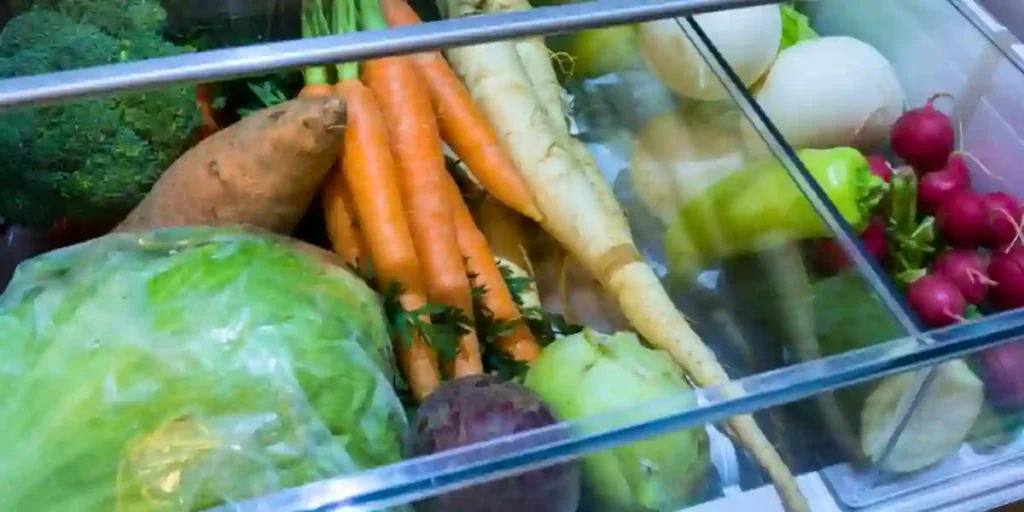
Pick up a vegetable. Does it feel rock-hard? This hardness indicates freezing. Fresh veggies should maintain some suppleness.
Check Vegetable Color
Another symptom is discoloration. Frozen vegetables often take on a duller hue than fresh ones.
Smell Your Vegetables
The aroma of your vegetables can tell a lot. Freezing alters the natural smell, making it less vibrant or completely absent.
Watch for Freezer Burns
Freezer burns show as dry, grayish-brown patches on your vegetables. This symptom arises from the veggies freezing and dehydrating.
Assess Moisture Content
Feel your vegetables. Do they seem dehydrated? Freezing draws out moisture, leaving your vegetables dry to the touch.
Listen to the Sound
Give the vegetables a tap. If they emit a hollow sound, it’s likely they’ve been frozen. Fresh vegetables usually have a firm, solid sound.
Maintenance Tips For Preventing Vegetable Freezing In Refrigerator Drawers
Choose the Ideal Fridge Temperature
To prevent vegetables from freezing, you need to keep your refrigerator at an ideal temperature.
Most experts, including me, recommend a temperature of 40°F (4°C). This temperature is cold enough to keep food safe and fresh, but not so cold that your vegetables will freeze.
You can use a fridge thermometer to monitor the temperature. It will give you a clear idea if your fridge is running too cold.
Avoid Extreme Cold Zones
Different parts of your refrigerator have different temperatures. The coldest parts are usually near the back and close to the freezer section.
You should avoid storing vegetables in these areas. Try placing your vegetables in the middle or on the fridge door where temperatures are more consistent.
Use Crisper Drawers Correctly
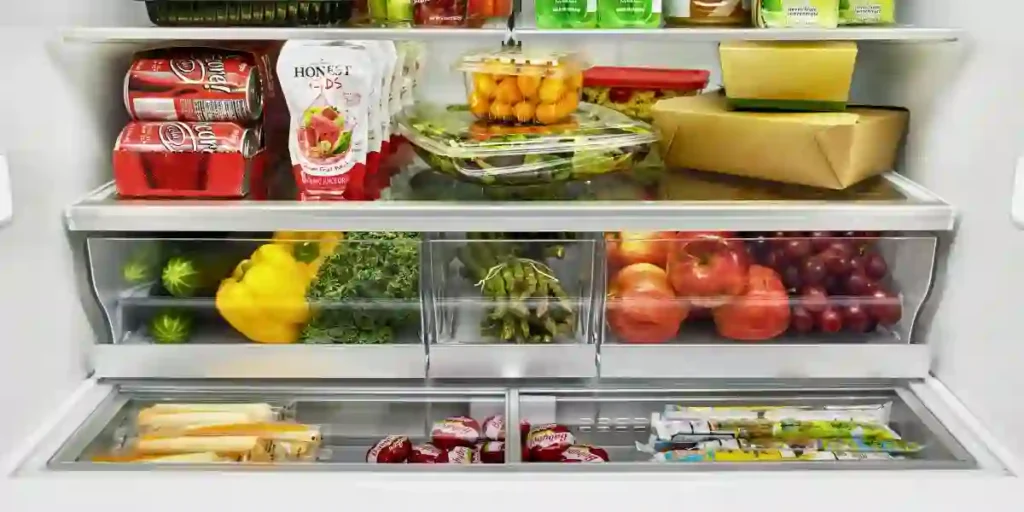
Crisper drawers are your best friend when it comes to storing vegetables. They are designed to control humidity, keeping your vegetables crisp and fresh.
Ensure the vent in your crisper drawer is open to allow cold air to escape. If your fridge has a humidity control on the drawer, set it too high for vegetables.
Don’t Overcrowd Your Fridge
When you stuff your refrigerator too full, air can’t circulate properly. This can lead to cold spots where vegetables might freeze.
To keep the temperature even throughout your fridge, try to leave some space between items.
Store Veggies in Breathable Bags
Vegetables need to breathe. Storing them in sealed bags can lead to condensation, which may freeze and harm the vegetables.
Instead, use mesh bags or poke holes in plastic bags. This allows moisture to escape and helps prevent freezing.
Dry Veggies Before Storing
If you wash your vegetables before storing them, make sure to dry them thoroughly. Extra moisture can turn into ice in the cold environment of the fridge.
Using a salad spinner or patting them dry with a towel can help get rid of excess water.
Defrost Your Fridge Regularly
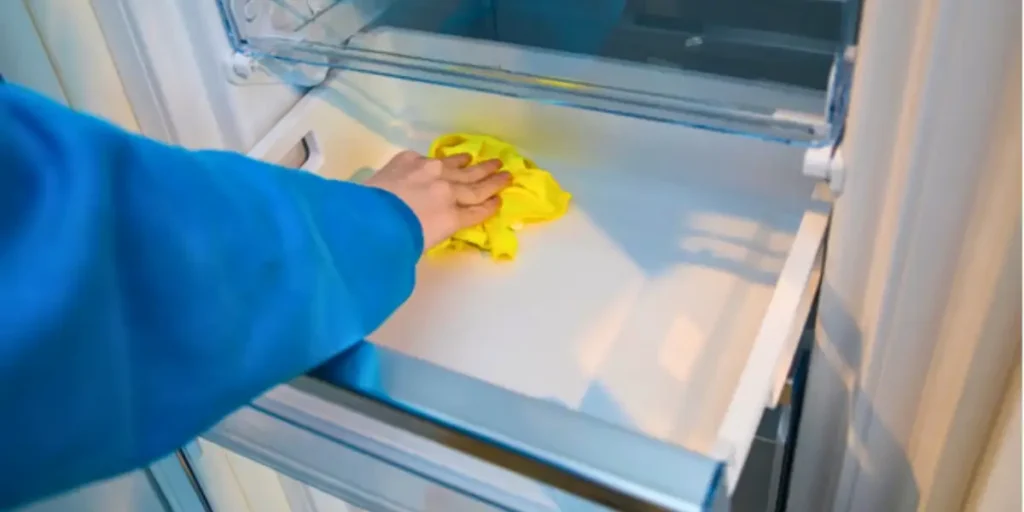
Over time, ice can build up in your refrigerator, especially if it’s an older model. This frost can make your fridge colder than it should be.
To prevent this, defrost your fridge regularly. This will keep it working efficiently and help to maintain a consistent temperature.
Get Regular Fridge Check-Ups
Just like any other appliance, your fridge needs regular check-ups. This ensures that it’s working properly and can help spot any problems early.
Consider getting your refrigerator serviced at least once a year. This will ensure that it’s keeping the correct temperature and that the ventilation is working as it should be.
FAQs
How Can I Prevent My Vegetables From Freezing?
Utilize the crisper drawers in your fridge, they help control humidity. Don’t overcrowd your fridge; good air circulation helps maintain even temperature.
What Is The Best Way To Store Vegetables To Prevent Freezing?
Store your veggies in breathable bags in the crisper drawers. Also, ensure that the vegetables are dry before placing them in the fridge.
What Should I Do If My Vegetables Keep Freezing?
You might need to defrost your fridge or get it checked by a professional. Over time, a malfunctioning fridge can create cold spots that cause freezing.
How Does Freezing Affect My Vegetables?
Freezing can alter the texture and taste of vegetables. It can make them mushy and less flavorful once defrosted.
Why Does My Fridge Freeze Vegetables Even At The Right Temperature?
The problem could be due to uneven air circulation. A crowded fridge can lead to cold spots. Regular maintenance helps identify and fix such issues.
What Are The Signs That My Vegetables Are Freezing In The Fridge?
Frozen vegetables may have an icy coating, feel hard, and their color may look dull. They may also develop freezer burns and lose their natural smell.
Conclusion
Your veggies shouldn’t turn into popsicles! Keep a keen eye on your fridge settings, ensuring the temperature stays around 37℉.
Remember not to block airflow by overstuffing, especially in the crisper drawers. Slide your drawer vents open to reduce humidity.
And above all, keep your fridge well-maintained for crisp, fresh produce every day.
